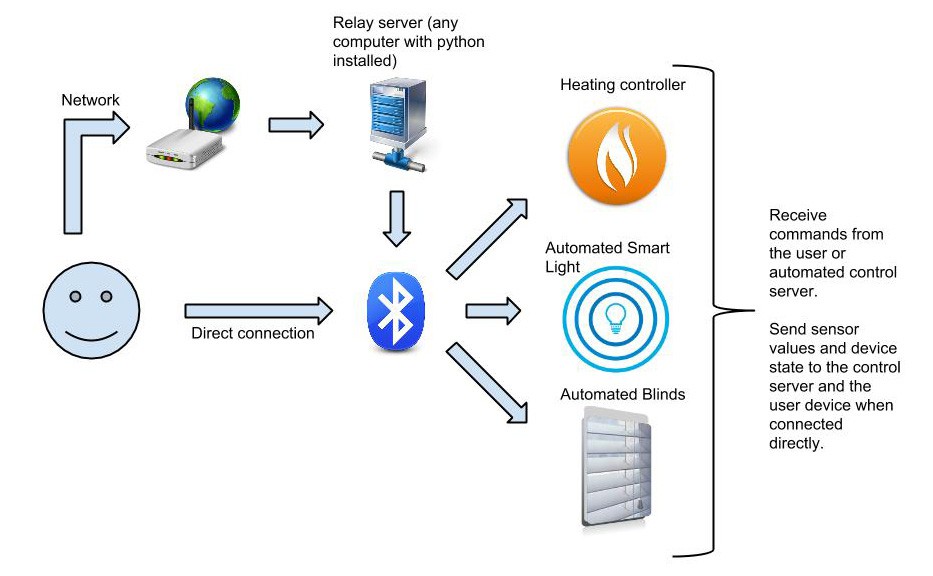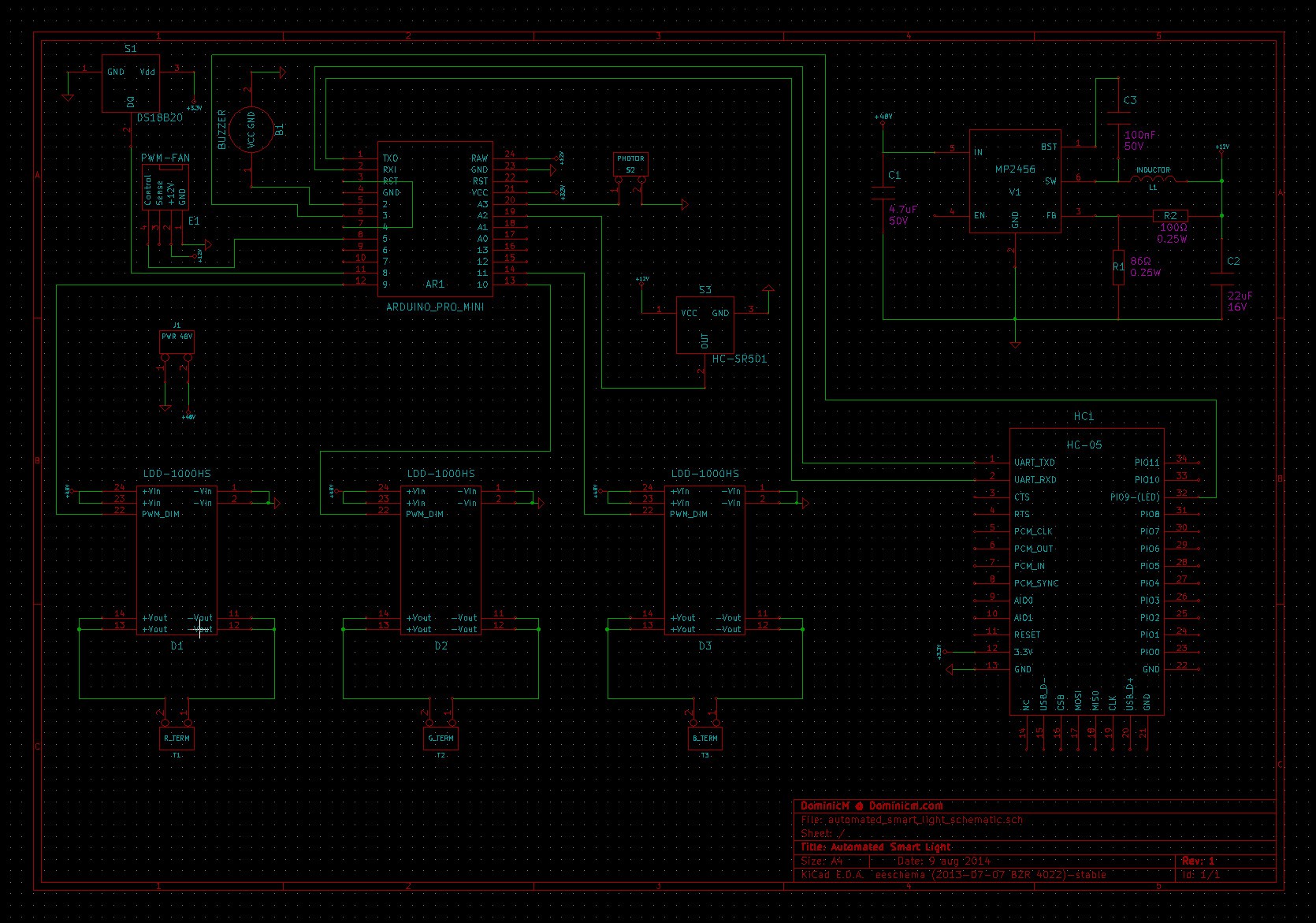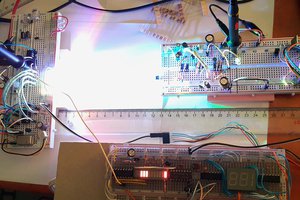Features:
- Power saving high efficiency LED chip
- High power and lumen output
- RGB LED allows for any color of the 16,581375 possibilities
- Direct wireless control from Bluetooth enabled devices
- Optional control over internet via relay device
- Automatic, interaction free operating mode options
- Detailed manual control options and modes
- Software updates over Bluetooth wireless link.
Functions:
Default boot modes: Boot mode defines the settings to be applied on start-up.
- Off – Remains off on boot.
- Default – Applies user defined default values.
- Last - Returns to the last state before the last power down.
Control modes: This is used to set the behavior of the device. Either manual or one of the automatic modes can be used.
- Manual – remains off until user interaction.
- Light mode – matches a user specified ambient brightness level for an even and constant lighting.
- Motion – detects human (or animal) presence in the area and activates a pre-defined display state. Will turn off when no movement is detected in a specified timeout period (5min by default).
- Auto – Combines both Light and Motion modes to produce constant brightness when someone is in the area.
Display modes: Light settings can be controlled manually either from a Bluetooth device or via a web interface.
- Solid – remains at any constant shade of color from the 16581375 possible combinations. White, red, green, blue, pink, yellow etc…
- Cycle – rotates all possible color combinations at a given speed.
- Additional modes?
External Devices
This project is a practical one and this practicality doesn't end with the device itself or the Bluetooth device that controls it. It currently has 3 sensors built-in: temperature, luminosity and motion detection. All of them are used internally and displayed to the user in the interface. The use of these sensors doesn't need stop there.
Since the light is intended to be fixed in the center of the ceiling the sensors are in an ideal position to collect data. This data can then be used by virtually any external project that need to know the temperature of the room, the light levels or whether there are people in a certain room.
Having this data may even eliminate or at least reduce the need for redundant hardware for certain projects like:
- Security system that would no longer need hardware sensors in every room but instead could simply access the motion sensor data from the smart light directly of from the central relay which could be any 24/7 machine like a laptop, home server (NAS) or raspberry pi.
- Automated curtain or blind opener. Device would use the light sensor data from the smart light to let enough light in to room to match the user preset value. This would have great potential to save power while maintaining comfortable light level without requiring the user to lift a finger.
- Power saving devices that turn off devices in stand-by mode. With the motion detection sensor such devices could go further by turning off all devices that are not needed when there is no human presence.
There are plenty of other projects that could work in tandem and even more if additional sensors are added to the light.
System Design:

Schematic:

 DominicM
DominicM






 Ulrich
Ulrich
 Ana
Ana
 Jovan
Jovan
 trax
trax
can you make instruction for newbie that they can follow easily to make the project?